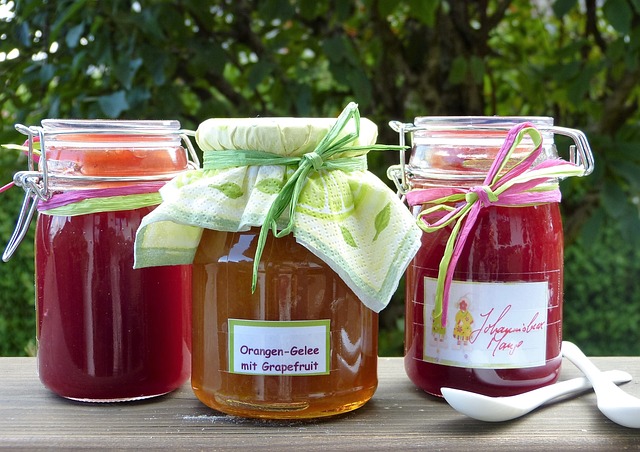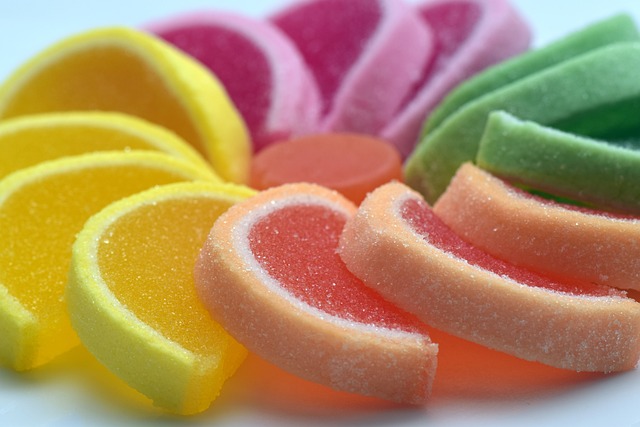In the vibrant tapestry of American cuisine, certain elements stand out as both familiar and beloved. Among these culinary treasures, jelly emerges as a delightful and versatile creation that has found its way into countless households and kitchens across the nation.
In the United States, “jelly” refers to a clear, semi-solid substance made from fruit juice and sugar. It is similar to jam but differs in terms of texture and ingredients.
Here, You are going to discover more about jelly as we examine its history, method of preparation and difference from the jam.
Origin of jelly?
The story of jelly goes back to ancient times, with its exact beginnings a bit fuzzy. However, evidence suggests that early civilizations, such as the Egyptians and Greeks, tinkered with ways to preserve and intensify the flavors of fruits. Fast forward to the Middle Ages in Europe, where sugar became more accessible, leading to the creation of sweet concoctions.
As time moved on, jelly-making became fancier during the Renaissance, as methods for clarifying fruit juices improved. When settlers arrived in America, they adapted these techniques to local fruits and resources. With the 19th-century industrial revolution, commercial production of jellies took off, making them a pantry staple for many households.
what is the difference between jelly and jam?

The main difference between jelly and jam lies in their texture and ingredients:
Jelly:
- Jelly is made from fruit juice.
- It is clear, smooth, and translucent in appearance.
- The process involves straining out any solid parts of the fruit, leaving only the juice.
- It has a firm gel-like consistency.
- It doesn’t contain any fruit chunks or pieces.
Jam:
- Jam is made from crushed or chopped whole fruits, including their flesh, skins, and sometimes seeds.
- It has a thicker, chunkier texture due to the fruit pieces in it.
- Also, vary in consistency, from smoother ones with smaller fruit pieces to those with larger, more noticeable chunks.
- The fruit content gives the jam a richer flavor profile compared to jelly.
Preserves:
- Preserves are similar to jam but have larger fruit pieces, giving a more robust texture.
- Like jam, they contain whole fruits, but with more noticeable chunks.
- The visible fruit pieces make preserves visually appealing and rustic.
What is the Processing of Jelly-Making?
Through careful preparation and cooking, the process results in a spreadable condiment that is both visually appealing and flavorful.
Juice Extraction: The journey begins with the extraction of fruit juice from ripe fruits. This juice serves as the foundation for the jelly-making process, bringing the essence of the fruit’s flavor.
Straining and Refinement: Once it is done it undergoes a refining process. Strained to remove any solid particles or seeds, ensuring a smooth consistency in the final product.
Combining Ingredients: With the clarified juice in hand, the next step involves combining it with two essential components sugar and pectin. Sugar adds sweetness and acts as a preserving agent, while pectin, a natural thickening agent found in fruits, is crucial for achieving the desired gel-like texture.
Controlled Cooking: Then mixture, sugar, and pectin are carefully cooked over controlled heat. This process serves multiple purposes: it activates the pectin to thicken the mixture, enhances flavor development, and initiates the transformation into the characteristic jelly consistency.
Setting the Gel: As the blend heats and reaches a specific temperature, the pectin molecules react, causing the liquid to undergo a transformation. Gradually, transitions from a fluid state to a semi-solid, gel-like consistency.
Cooling and Packaging: Moreover, desired gel texture is achieved, and the mixture is removed from heat and allowed to cool. During this cooling phase, the jelly fully sets into its characteristic form. Lastly, it is carefully packaged in containers suitable for storage and consumption.
What are the Varieties of Fruits used in jelly making?
Berries: Berries like strawberries, raspberries, and blackberries add sweetness and vibrant colors.
Grapes: Grapes, whether red or white, provide a juicy and balanced sweetness.
Citrus Fruits: Oranges, lemons, and limes bring zesty and tangy flavors that stand out.
Stone Fruits: Peaches, apricots, and plums contribute to their unique sweet and sometimes tart tastes.
Exotic Fruits: Exotic fruits such as mangoes, pineapples, and pomegranates offer intriguing and different flavors.
Blends and Mixes: Sometimes, different fruits are mixed together to create exciting new combinations that surprise your taste buds.
Versatile Culinary Applications of Jelly
To begin, jelly elevates the flavor of simple toast, transforming it into a delightful treat. Additionally, the timeless combination of peanut butter and this fruity spread evokes nostalgia in the form of classic PB&J sandwiches.
Moving beyond that, it introduces a delightful touch to pastries like croissants or Danishes, infusing them with a subtle hint of sweetness. Moreover, doughnuts and cookies take on added allure with an unexpected filling.Furthermore, pancakes and waffles undergo a flavorful transformation when adorned with the fruity essence of this spread.
Similarly, a spoonful of jelly mixed with yogurt and oatmeal imparts a refreshing boost of taste.Transitioning to savory delights, It serves as a versatile foundation for crafting both sweet and savory glazes. Also, warmed one becomes a versatile drizzle for ice cream or a satisfying finale for desserts.
Shifting the focus to cheese pairings, the interplay of flavors between cheese and this spread yields an intriguing contrast. Additionally, when placed on a charcuterie board, jelly injects vibrant color and flavor into the arrangement.
At last, Highlighting its versatility, jelly-infused vinaigrettes bring a unique twist to salads.
What are variations of jelly?

First and foremost, you have timeless favorites like grape, strawberry, and raspberry flavors. These capture the essence of familiar fruits and offer a cozy, comforting taste.
Additionally, there are spreads infused with citrus fruits like oranges and lemons. These bring a zesty, tangy twist that adds brightness to your dishes.
For those seeking a bit of excitement, spiced versions with ingredients like cinnamon or ginger provide a warm, aromatic punch that’s fantastic with cheeses or meats.
Moreover, pepper-infused options combine sweetness with a kick of heat, making them ideal for adding flair to appetizers and glazes.
If you’re in the mood for something unique, herbal spreads featuring mint or basil can elevate your culinary creations with their fresh, aromatic touch.
Furthermore, wine or liqueur-infused varieties introduce a touch of elegance, bringing complex flavors that complement cheeses and desserts.
Exploring more adventurous options, exotic fruit spreads like mango or passion fruit offer a taste of the tropics that’s perfect for adventurous palates.
Also worth considering, there are reduced sugar or no-sugar choices, catering to those looking for a healthier option without sacrificing taste.
Lastly, modern experimentation has given rise to unexpected creations like balsamic vinegar or coffee-infused alternatives, adding intriguing flavors to the mix.
FAQ
Is jelly the same as Jello (gelatin dessert)?
No, Due to the similarity in names, people sometimes confuse the two. Jelly in the US refers to fruit spreads, while Jello (gelatin dessert) is a wobbly, semi-solid treat made from flavored gelatin and water.
What is peanut butter and jelly (PB&J), and why is it popular?
Peanut butter and jelly sandwiches are a staple in many American households. This FAQ might cover its history, popularity, and the combination of peanut butter and jelly flavors.
Can I make homemade jelly?
Yes, This question might address the process of making jelly at home, including the necessary ingredients, equipment, and steps involved. People might also ask about the differences between homemade and store-bought jelly.
What is the difference between fruit jelly and fruit butter?
This question could delve into the distinctions between fruit jelly, which is made from fruit juice, and fruit butter, which involves cooking down fruit puree with sugar until it thickens.
Are there any sugar-free or low-sugar jelly options available?
Yes, With a growing interest in healthier eating, people often inquire about sugar-free or reduced-sugar alternatives to traditional fruit jellies.
How can I use jelly in recipes beyond just spreading it on bread?
This might explore creative uses for jelly, such as using it as a glaze for meats, mixing it into yogurt or oatmeal, or incorporating it into baked goods.
What are some artisanal or gourmet jelly brands in the US?
This question could highlight high-quality, unique, or specialty jelly brands that offer a wide range of flavors and unique ingredients.
Conclusion
To sum up, In America, jelly is a well-liked and well-known fruity spread. Gelatin gives breakfasts and snacks a wonderful blast of fruity taste owing to its smooth and gelatinous texture.
Moreover, Jelly’s journey is a reflection of how changing cultural and gastronomic trends have influenced American food, making it a prized and adored element of the culinary scene. It continues to bring together generations, inspire creativity, and offer a hint of sweetness to routine moments in American homes, whether it is consumed as a cozy childhood favorite or as a component of imaginative culinary creations.

